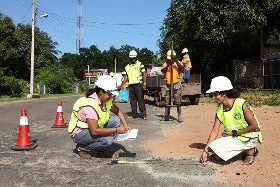
Historically there have been many who claim that not enough aid is given. The immediate post-War period witnessed large-scale funding through the Marshall Plan and growing aid to developing countries, focusing on technical assistance. In 1951 a UN commission recommended an increase of aid, to about $5 billion a year, to help countries increase economic growth to 2%. The most commonly quoted Partners in Development report argued for an increase in aid to 0.7% percent of Gross National Income of donors and to increase the efficiency of aid.
Conditions changed abruptly towards the end of the 1970s with the second oil shock, leading to the international debt crisis. Macroeconomic imbalances became widespread among developing countries. Focus in development strategy and policy shifted to internal policy failure. Achieving external and internal balance was widely perceived as an essential prerequisite for renewed development. Trade, not aid, became the dominant slogan among many leaders and economists. The optimism around 1970 was followed by ‘structural adjustment’ and stabilization of economies, and ‘aid fatigue’. Nevertheless, throughout the 1980s there were calls for increasing aid. The 1990s witnessed sharp reductions in Overseas Development Assistance (ODA) with the end of Cold War and tightening budget constraints in donor countries.
A major convergence of economic and political factors around the early 1990s led to a widespread feeling of there being a problem in the field of aid-promoted development policy. Policymakers at a global level faced a new set of problems in the context of a shift arising from the end of the Cold War. Aid could move away from being regarded largely as a geopolitical strategic tool. In addition, the Asian economic crisis and the lackluster performance of sub-Saharan Africa posed serious challenges.
Reliance on market forces, increased outward orientation, and the role of the private sector, including NGOs, were emphasized by the World Bank and others. Bilateral donors and international agencies struggled with how to channel resources to the developing world. Financial program aid and adjustment loans became fashionable and policy conditionality more widespread. The experience gathered from these operations galvanized into the ‘Washington Consensus’ which defined the conditions for effective aid flow.
From the late 1990s onwards calls for increasing aid again became stronger, accompanied by a sharpened focus on poverty reduction. A consensus emerged that a renewed approach to development assistance was warranted. Out came the Millennium Development Goals (MDGs), directed explicitly at poverty reduction and addressing basic needs such as access to education, health and water. In this vein came many initiatives such as the Commission for Africa and the Jubilee Debt Campaign to cancel third world debts. The plight of the poor became a part of popular discourse and a cause of celebrities and politicians alike.
A specific set of problems began to converge at this point in relation to the multilaterals. These centered on aid coordination, debt relief, and the policy content of structural adjustment lending. Most actors adopted the policy narrative that there was a serious perception of the failure of structural adjustment. Influential policy-makers, practitioners and academics explored new conceptual frameworks that could provide credible strategic and operational answers. The Highly Indebted Poor Countries (HIPC) review in 1999 triggered the Poverty Reduction Strategy Paper (PRSP) in international development policy.
The optimism that PRSPs would bring substantial change in aid relationships did not last long. Doubts emerged as to whether PRSPs were successful in generating political buy-in for poverty reduction. The PRSP approach required a change in donor practices towards a shared support to nationally formulated poverty reduction plans. Dissonance between donors’ insistence on ownership and the ways this is interpreted by recipients became all too obvious.
Once again aid is being rethought. Aid is only one part of broader international relations. Other objectives can significantly influence implementation of aid. Views on aid are very diverse, fuelled inter-alia by theoretical and moral considerations. The governance-development link is disputed by moving from a more state-centric focus to the interaction between state and non-state actors, between formal and informal institutions. A consensus seems to be emerging that developing local narratives of aid relationships are essential to inform this on-going debate. Shanta Devarajan has recently argued rather provocatively: “If aid is to help solve the problem of development, it must be disruptive. If it isn’t, we risk leaving poor people stuck in the low-level political equilibrium they have been caught in for decades.”
The motivation behind the current rethinking on aid is aptly summarized by Lawrence Summers: “I have seen close to a dozen cases over the past quarter century where the precedent of the Marshall plan was invoked. None was as successful as the original. This reflects the truth that functioning institutions cannot be imposed from outside. Countries and their peoples shape their own destinies.”


Join the Conversation